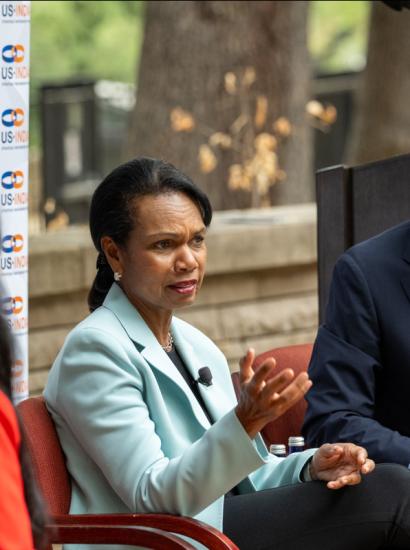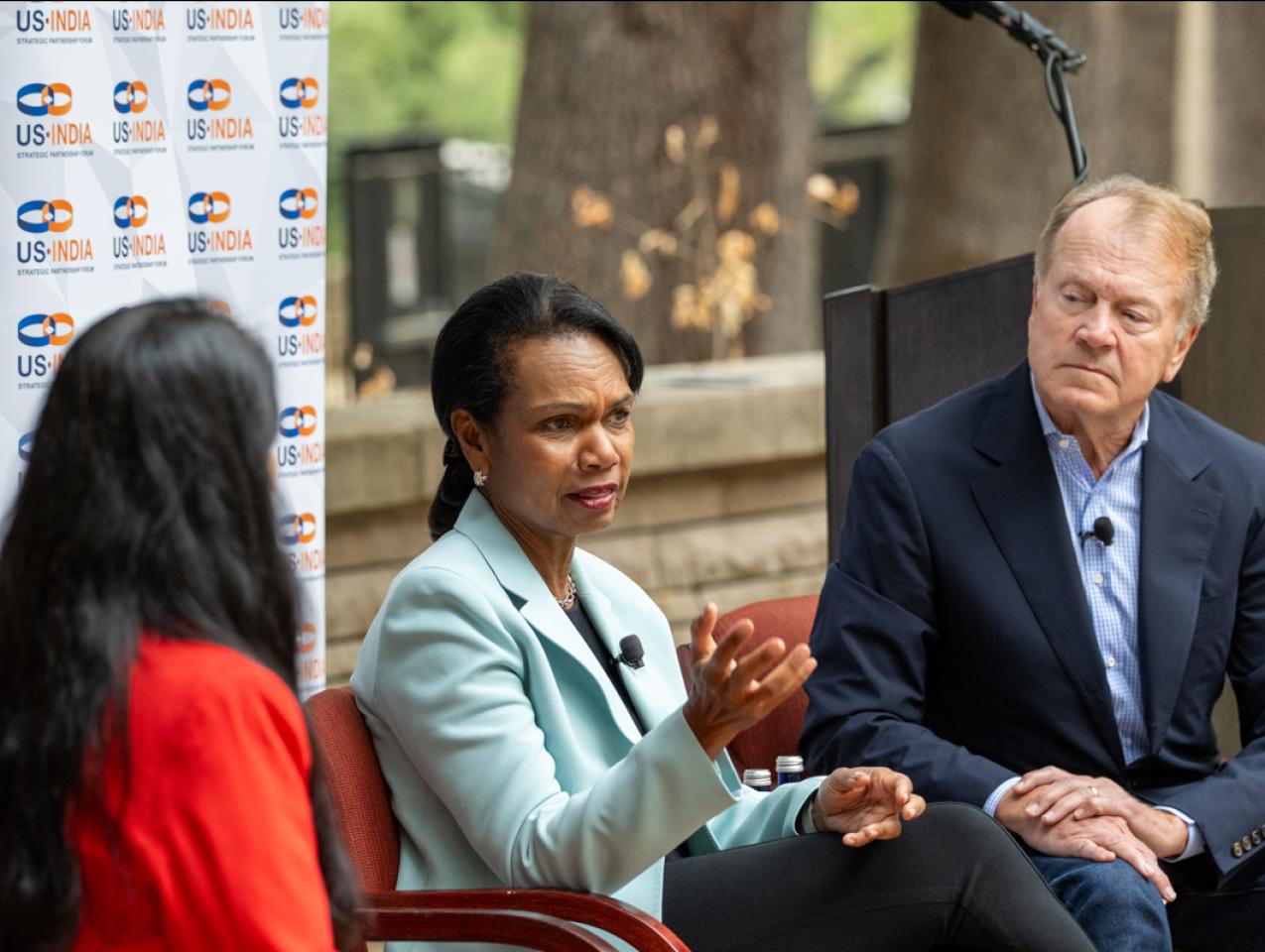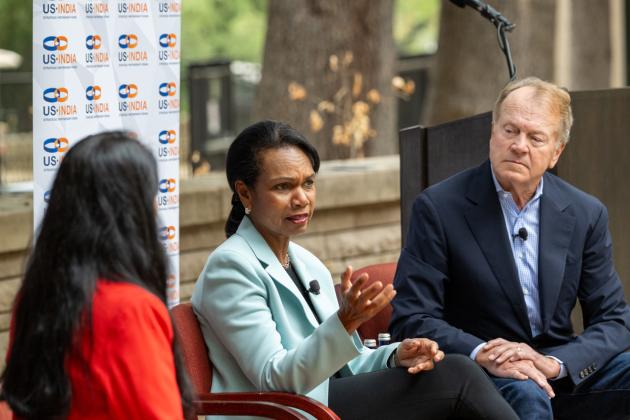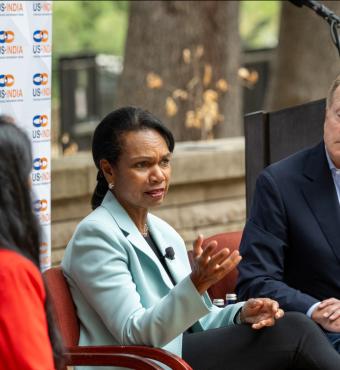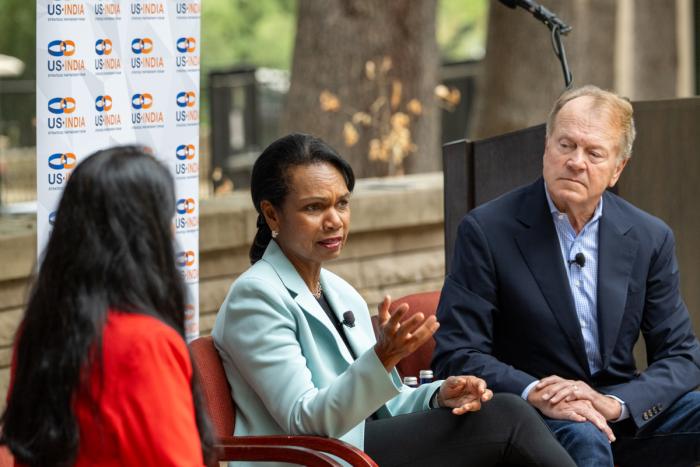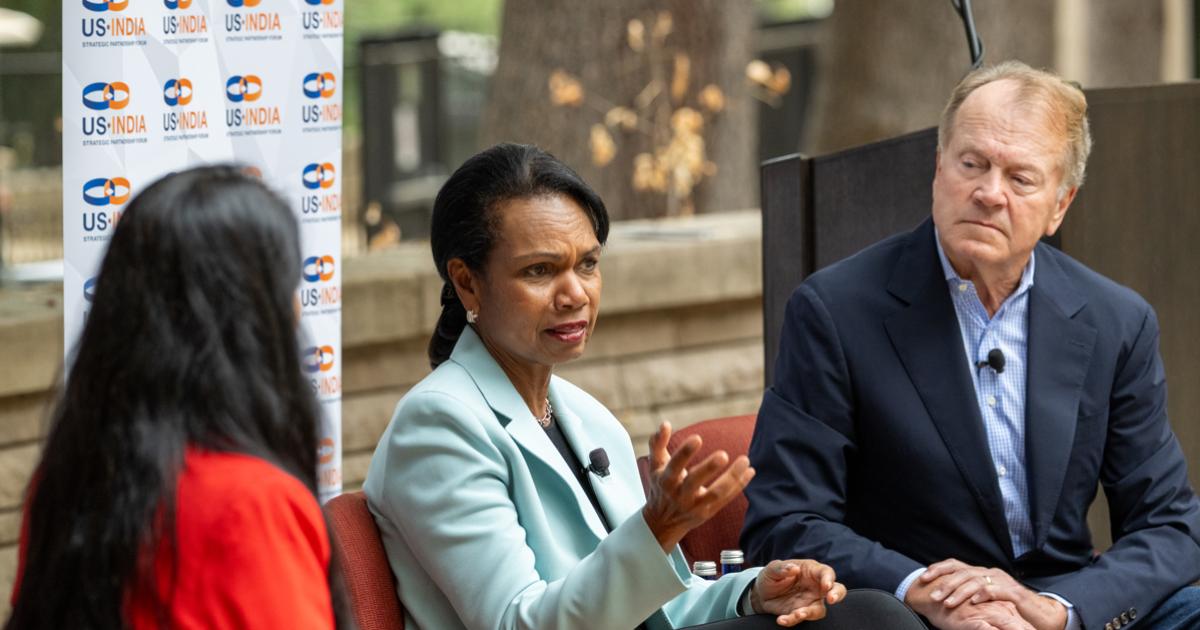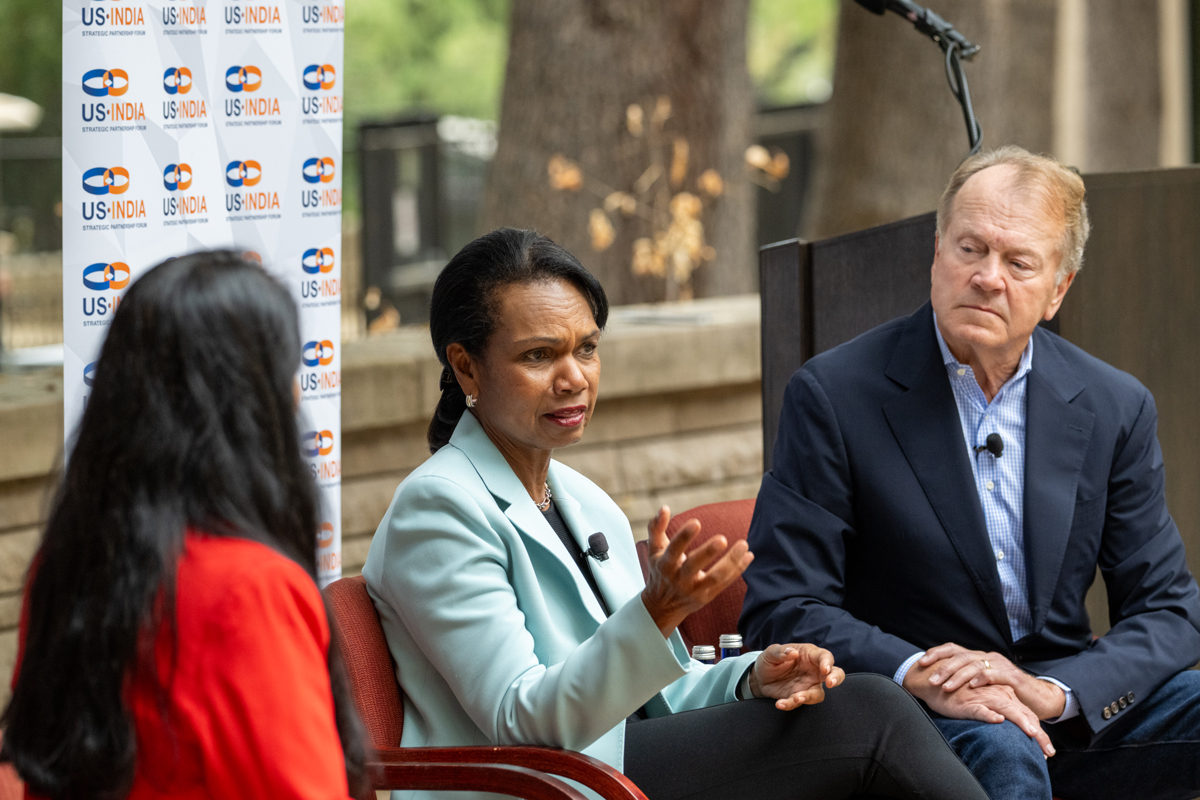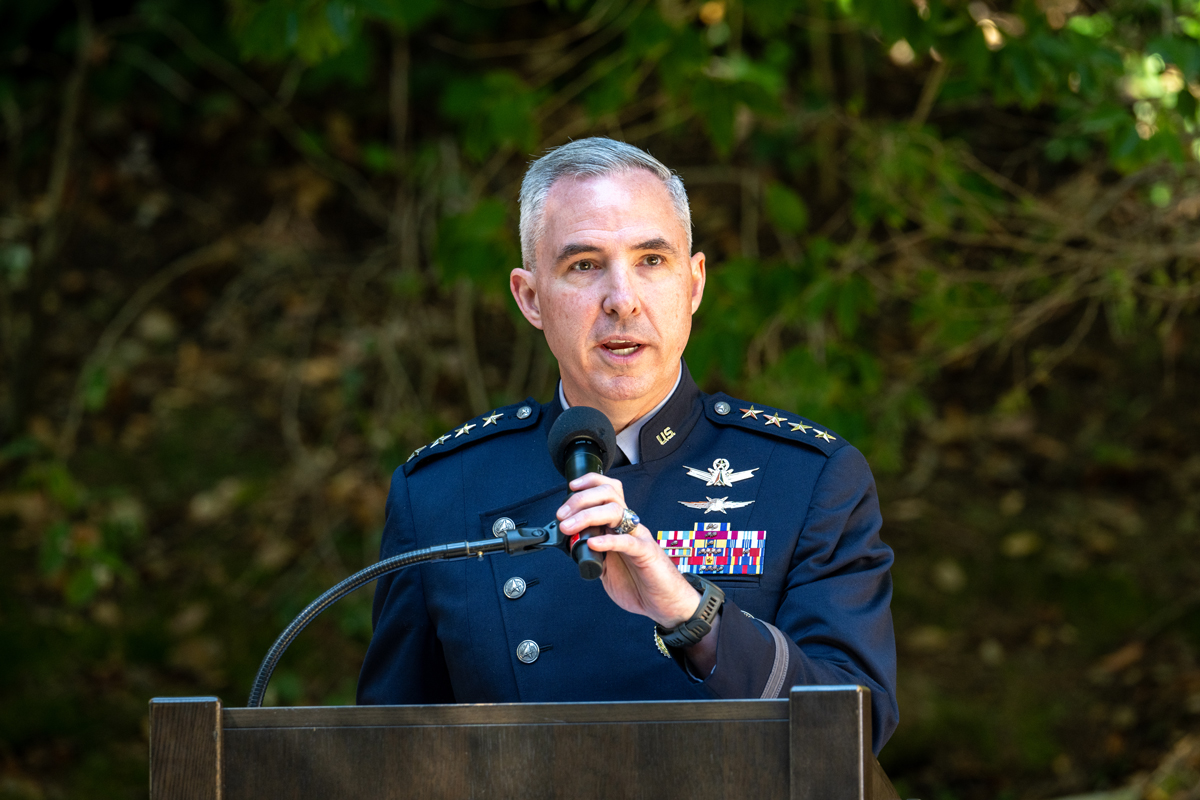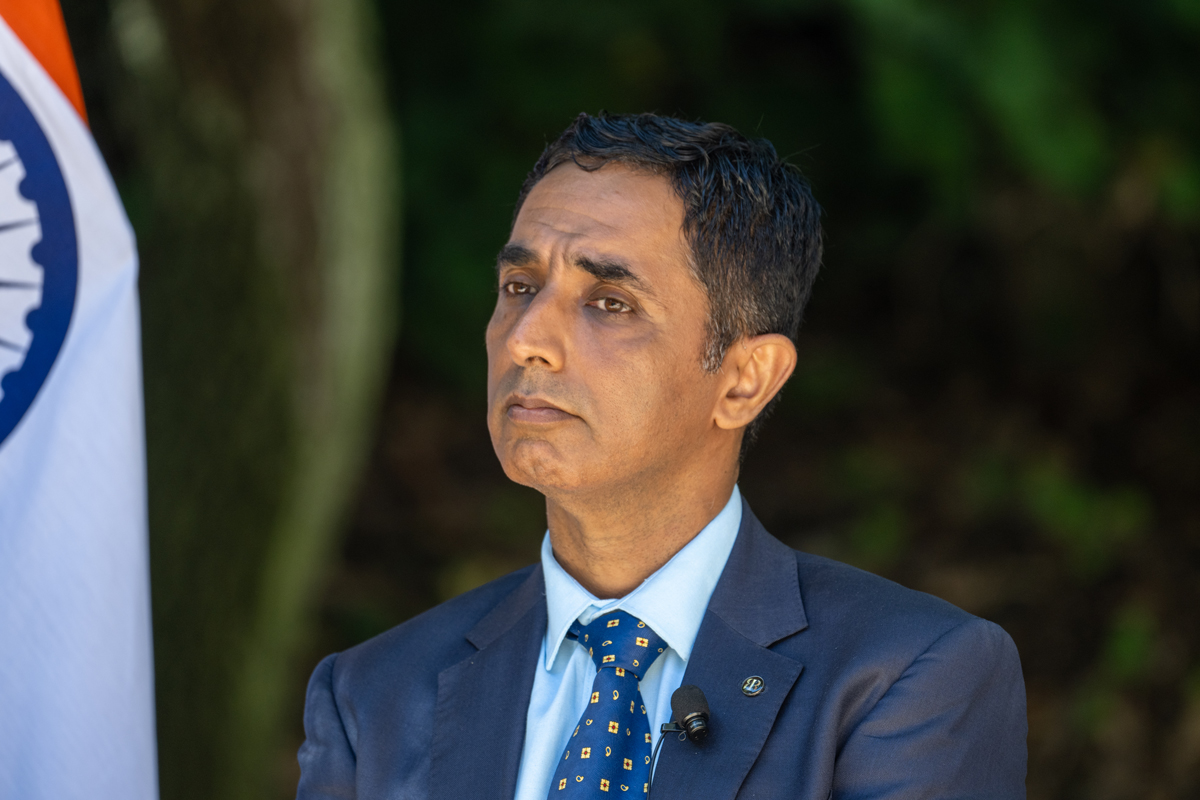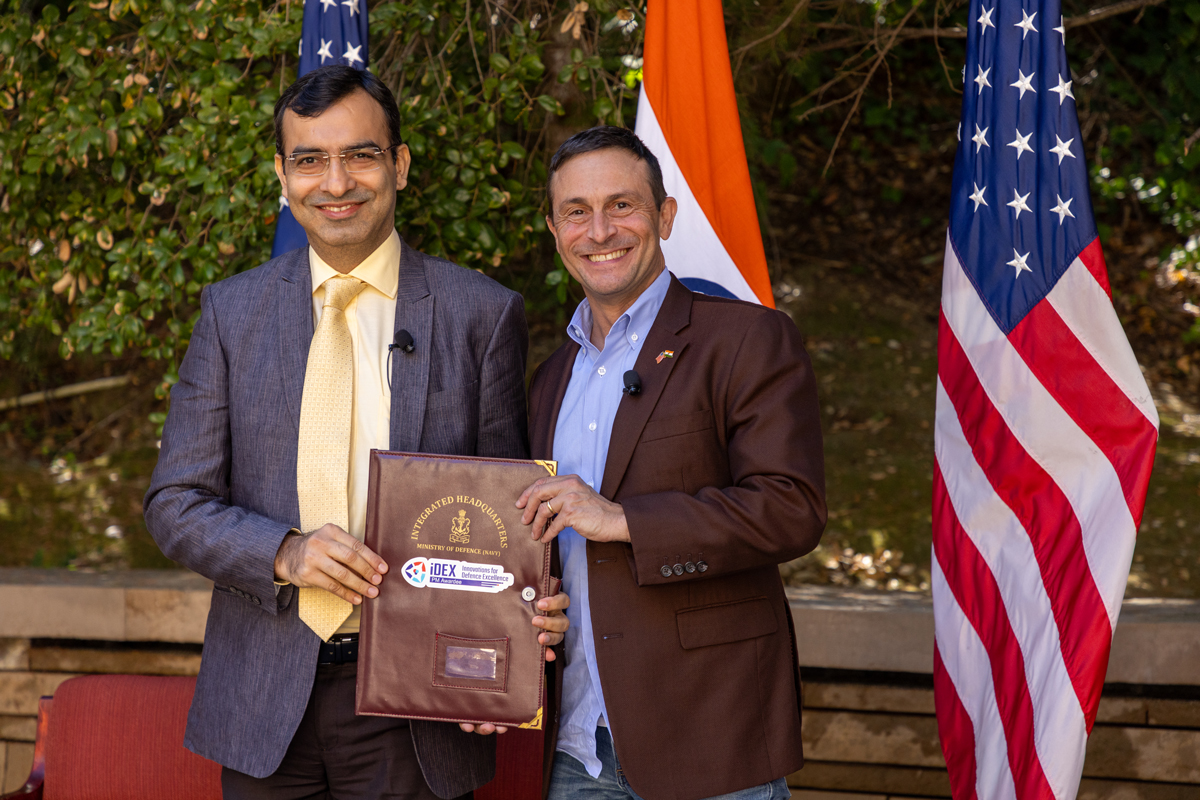Hoover Institution (Stanford, CA) — US and Indian defense officials signed a memorandum of understanding on Stanford’s campus September 9, 2024, pledging further cooperation on defense innovation at the INDUS-X conference which saw Hoover Institution director Condoleezza Rice predict a continued warming of US-India relations.
Speaking with NDTV’s Maha Siddique and former Cisco chairman John Chambers on a panel, Rice said the US-India relationship won’t change after the election in November because US support for growing ties with India is “not only bipartisan, it is enduring.”
“You’re going to hear from whoever occupies the White House in January that this is one of the most important, if not the most important, relationship,” Rice said.
Set up in early 2023, the India-US Defense Acceleration Ecosystem (INDUS-X) brings together the Indian and US militaries and their related defense industries for discussions about cooperation and joint production of new military equipment, with an emphasis on start-ups and smaller ventures in both nations.
INDUS-X issues “challenges” to the Indian and US defense sectors, requesting new defense products from defense start-ups in both nations in exchange for cash prizes.
Its first three challenges awarded more than $1.2 million in prize money to companies working on maritime surveillance applications for both countries’ navies.
There are now more than thirty active projects underway involving some sort of collaboration between the US and Indian defense industries, up from only a handful as recently as 2016.
The meeting at Stanford on September 9 and 10 was organized by Joe Felter, Hoover research fellow and director of the Gordian Knot Center for National Security Innovation.
“There is no better place than Stanford and the Hoover Institution to host this important third meeting of INDUS-X in less than 18 months,” Felter said. “The growing defense innovation ecosystem readily comes together on Stanford campus located here in the heart of Silicon Valley. The cutting-edge technologists, investors, and leading academics participating in INDUS-X contributed meaningfully to the primary objective of the India- US Defense Acceleration Ecosystem, which is strengthening the defense innovation ties between the US and India.”
Distinguished Visiting Fellow David C. Mulford, who served as US ambassador to India from 2004 to 2009, said the conference was a crucial step for improving ties between the two nations.
“Here today, we have a remarkable gathering of experts, industry leaders, military officials, and policymakers from both the United States and India, representing the dynamic defense ecosystem that is crucial to our partnership,” Mulford said. “This ecosystem is a testament to the partnership between our two nations—a collaboration built on respect, shared values, mutual trust, and common security interests.”
Senior fellow Sumit Ganguly chaired a session during the meeting on defense cooperation, and research fellow Dinsha Mistree participated on a panel discussing how both countries can innovate on defense products together.
Growing Technological and Defense Cooperation Between India and US
The meeting also featured leaders of the two government agencies tasked with introducing start-up-like practices to each country’s defense product development and procurement processes.
“Our adversaries resent how close we are becoming,” US Defense Innovation Unit (DIU) director Doug Beck said, adding, “We cannot meet our strategic imperatives without employing the full power of the commercial tech sector.”
Sitting next to him was one of his Indian counterparts, Defense Innovation Organization (IDEX) COO Vivek Virmani.
Both organizations work to leverage the commercial sector, especially smaller tech firms, to produce items or systems their respective militaries need, ideally in a fraction of the time it takes larger firms.
“IDEX and DIU are the innovation arms of two of the most powerful militaries in the world and two of the most important democracies in the world,” Virmani said. “It’s imperative and natural that our two countries should be partners, deeper partners than we are today.”
Beck and Amit Satija, Joint Secretary of Defense Production at the Indian Ministry of Defense, signed a memorandum of understanding that calls for continued and expanded joint exercises, greater information sharing, and more efforts to reduce regulatory friction on the part of India and the United States.
INDUS-X also helps encourage joint military exercises and technology demonstrations in each country.
Underway right now is a multi-battalion-size exercise in Rajasthan, India, involving troops from the US 11th Infantry Division and the Rajput Rifles of the Indian Army.
Later this month, INDUS-X is helping to arrange tests of the US Javelin antitank missile and the Stryker infantry fighting vehicle on the India-China border as a demonstration of the deterrence generated by growing US-Indian defense cooperation.
Growing the Relationship in Space
The growing collaboration between the Indian and US defense sectors is also poised to pay dividends in space.
Head of US Space Command Gen. Stephen Whiting told attendees that India and America began sharing data from space in 2019, and the relationship over space has grown stronger since.
In 2023, India signed on to the Artemis Accords, which detail five tenets of responsible behavior in space and outline rules for the responsible use of Mars, the moon, and comets that pass near Earth.
India has also indicated a willingness to participate in the US Lunar Gateway Program.
Forty-three nations have signed the Accords to date.
But not everyone with interests in space is behaving responsibly, Whiting said.
He said China has tested a satellite that can be used to tow another satellite out of its orbit.
“You can use your imagination to see how this capability could be concerning to us and our allies,” Whiting said.
And Russia has signaled its intent to launch a satellite that could carry a nuclear weapon.
“All nations should be concerned that Russia wants to put a nuclear weapon in orbit,” Whiting said.
Defense Partnership Discussions Starting to Bear Fruit
Throughout the two-day meeting, defense officials mingled with business leaders and investors from both countries, sharing insights about how defense development and procurement works in both India and the United States.
Participants discussed new ways to develop a whole host of defense products in both markets, ranging from unmanned combat aerial vehicles, armored personnel carriers, and hypersonic projectiles to communications and surveillance tools.
For more information about the INDUS-X Program, click here.









